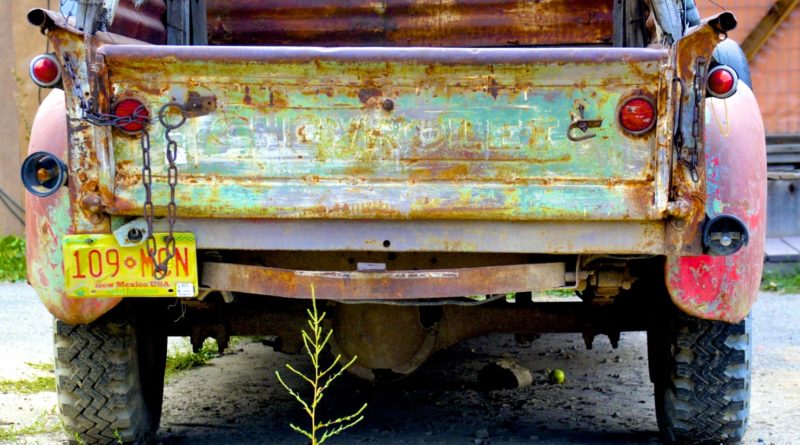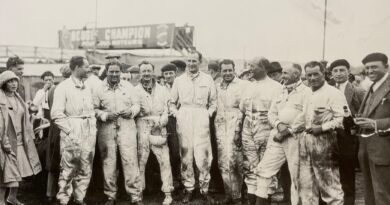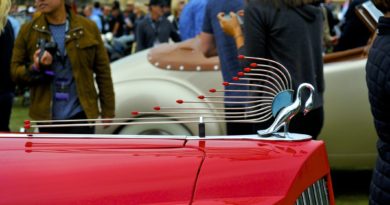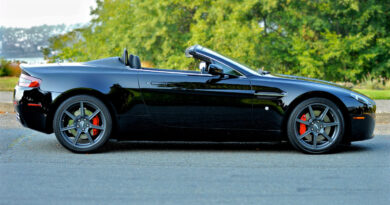Journaling New Mexico
“You ever been to New Mexico?” asks my wife.
“Nope. What are you thinking?” I reply.
“Well, I’ve never been to Taos or Santa Fe. I know we can’t ski yet, but I also want to see Taos ski area.”
“Sounds good to me. Do you want to leave on Thursday?”
“Sooner the better,” she says. “I have to be back at work on the 29th.”
“OK. I’ll figure out a route.”
After weeks of off-and-on pestering, it appears Janice has finally relented to a road trip. Even though COVID has dampened her resolve for a drive to the East Coast, the smoke-laden skies over Seattle have helped motivate us to escape. So I’m happy to accept New Mexico as my consolation prize.
Our hasty itinerary includes heading to Moab, Utah to visit the Arches and Canyonlands National Parks for a couple of days before heading to Taos and then Santa Fe. The plan is to suffer through using I-90 and I-84 to Boise to spend more time in Utah and retreat to using the secondary state road and highway systems later.
We pack the Aston Martin V12 Vantage to the gills with two sets of golf clubs, two small luggage bags, my camera backpack and a couple bags of amenities. Last comes a well-chosen bag of detailing supplies. Amazing what you can put into these cars when you think it’s only the size of a Porsche 911.
Day one
calls for 628 miles to Twin Falls, Idaho. Day one’s driving lowlight – we pick up two tagalongs through Idaho while cruising at 95 mph down I-84. Normally I don’t mind tagalongs, but a girl in a new BMW3 trying way too hard and a group of four goofing off in a Lexus is not a crowd I want to hang with. It’s like a cycling group that picks up a couple of strays who refuse to pull their weight and lead, but still insist they are as good as you. If you want to fall in behind me at a safe distance and stay there, then fine. But don’t change speeds, come up along side, drop back, generally screw around, pretend you’re something you’re not and continually give credence to your inferiority complex. Get a grip. Act like you’re driving a serious machine and behave smartly.
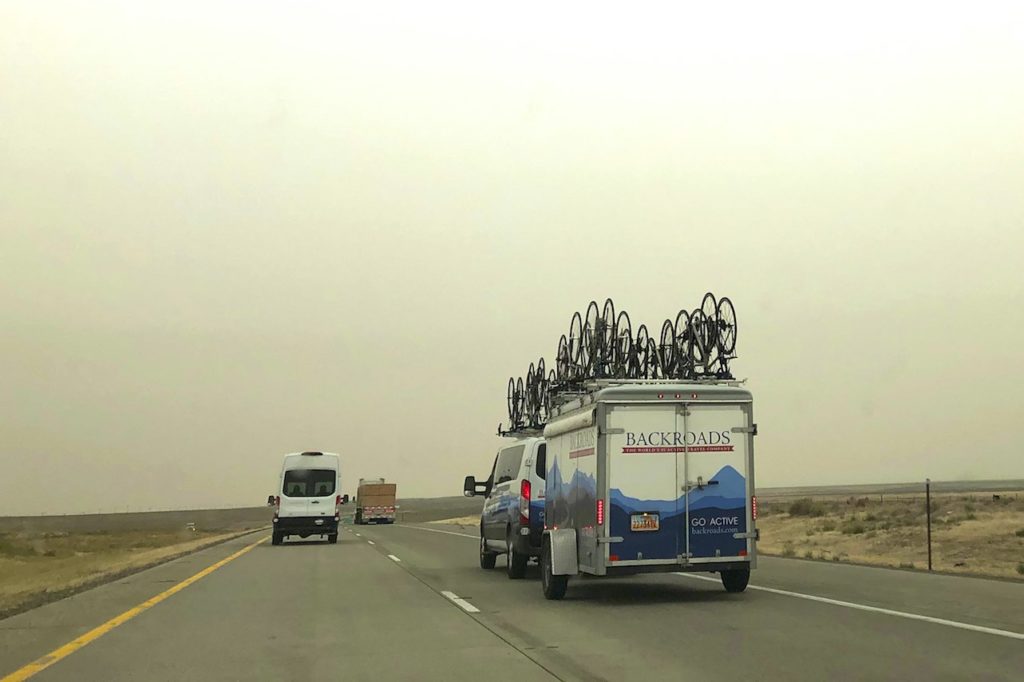
Irritation over, we pull into Boise for dinner. The Bardenay Distillery turns into a wonderful highlight. Downtown Boise is a surprisingly contemporary district filled with trendy restaurants and bars. My gluten-free (not by choice believe me) Reuben sandwich with Kimchi is to die for. And I’m jealous of Janice’s delicious pulled pork sandwich accompanied by a caramelized German potato salad. I’m not a flavored beer guy, but I compliment my Reuben with a Ghostfish gluten-free grapefruit IPA (sounds bad, I know, but it actually works).
“These flavors are so unusual,” I say between bites, “but they work!”
Janice agrees, “I know! I’m amazed. And here in little, ol’ Boise. Who’da thunk.”
The Bardenay is a great stop if you like brewpub atmosphere, good drink and imaginative, perfectly executed bar food.
We spend the night in Twin Falls, less than 90 minutes (the way I drive) from Boise.
Day Two
The next morning’s breakfast at the Buffalo Café turns into another highlight. Plopped between a couple trucking company parking lots and an auto shop, the cafe doesn’t have much street presence. Pay that no mind. If you like plain Jane old haunts that only locals frequent, this is a joint for you. A Buffalo head oversees your breakfast from the left side of the bar. After we order, I motion to the waitress who’s prepping silverware, “OK, I have to ask – what’s his name?” and I point to the Buff.
“That’s Eric,” she says.
“And how did he come by that name?”
“Well, it just had to be Eric. Eric, the Buffalo! It just rolls off the tongue!” she laughs.
Just rooolls off the tongue – OK, if you say so.
Crusty old farm-types talk local politics and catch up on business. The waitresses banter, laugh frequently and treat you like old friends. Curiosity gets the better of me and I settle on the Sawtooth omelette with bacon, tomato, blue cheese, and avocado. Janice commits to the house specialty, the Buffalo Chip, which as you might expect is a lot of everything. She eats half and takes the rest for later.
We drive all the way to Salt Lake City with smoke from the monstrous west coast wildfires still chasing us. We regularly come upon semis full of onions. I can smell them before we can see them. Our intention is to make it to Moab for a couple days in the National Parks. Checking Moab hotels before we leave, there’s plenty of availability so we feel no need to reserve a room.
Along the way, we encounter the usual summer road repairs on US 191 cutting traffic to one lane each way. With the lane closure in sight, a trucker suddenly takes exception to my executing the zipper rule of merging etiquette. We are a good ¼ mile from the pylons that close the left lane, but he doesn’t care. He’s decided I’m not going to pass him. I’m along side the trailer when he suddenly turns the tractor hard left, cutting me off and forcing me hard onto the shoulder and the brakes. “Shit!”
Then, inexplicably he relents and lets me by – like a bully making a point. Bizarre, is about all I can think of.
“What the F*k! Did I do something wrong, Janice?!”
“No. We’re not even to the pylons yet. Wow!”
Pissed off by something, he’s tempted to squash us like a bug, but then pulls back as if he realizes the paperwork won’t be worth the satisfaction. Classic passive/aggressive. I thought only Pacific Northwesterners had a monopoly on that.
As we get closer to Moab, Janice begins searching the internet for rooms. There aren’t any. She keeps looking. Tents are going for $125/night. What’s left is $350 and up and they’re being swept up as fast as she finds them. Traffic turns ugly – an eight-mile backup into Moab. She feels guilty for not reserving a room last night.
“Janice, I don’t care where we stay,” I say trying to offer options. “We can go to Green River or Grand Junction. This is nuts here.”
We decide we’ll eat dinner in Moab but we’re not staying. COVID has driven thousands of people to the National Parks. It’s crazy here and I have no desire to fight the crowds in the Parks, too.
We end up driving another 104 miles to spend the night in Grand Junction, CO. Another long day ends after 554 miles. Grand Junction seems to be named for the convergence of a railroad with cattle, and it is indeed cattle country. Largely flat with the occasional Mesa and rolling hills, it doesn’t harbor much but sagebrush and prairie grasses. It does offer one thing I have never seen: dozens of red and grey trimmed yellow locomotives in long lines, leading me to surmise this must be a locomotive service or storage depot for the Union Pacific.
Day Three
From GJ we head for Telluride, CO, one of many famous Colorado winter skiing playgrounds. About 90 minutes into our drive through largely boring country on long straights broken by the occasional big sweeper, we finally start to climb into the San Juan Mtns. We come across Ridgeway, a pleasant small old west town that’s a precursor to the flavor and look of Telluride. We’re easy to spot, as our Aston looks out of place in this country of HD pickups and 4-wheel SUVs.
The road (CO 62) turns and twists as it climbs to the CO 145 spur into Telluride. The road is silky smooth into town, obviously recently repaved. To bad we can’t give them a workout, but there are scattered homesteads, traffic and artificially low speed limits as a result. Still, a very beautiful drive into the box canyon that marks the terminus of Telluride.
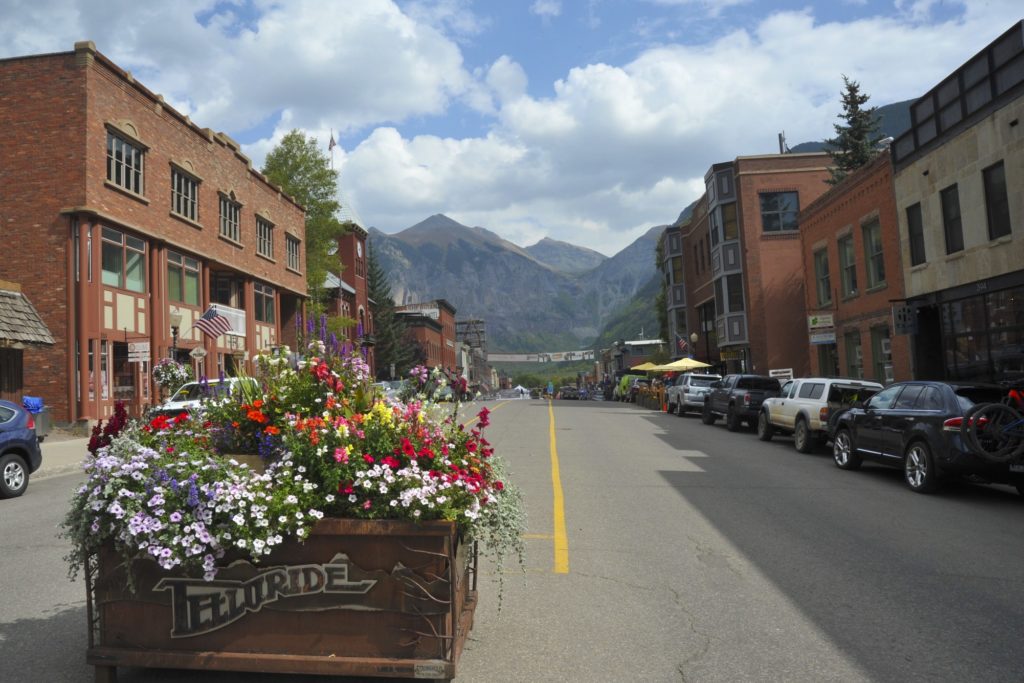
On the surrounding slopes, the aspens are beginning to turn their luminous golden yellow. The narrow valley floor is open grassland broken by groves of evergreen. Today it’s home to grazing elk and black angus surrounded by a series of peaks all soaring more than 14,000 feet over our heads.
At 8,750 feet Telluride is a quintessential high country time warp of the old American west. Begun as the Sheridan silver mine camp in the early 1870s it officially became the town of Telluride in 1878. It has retained that nineteenth century Colorado tourist flavor for skiers and summer bikers, hikers and looky-loos. After an afternoon in Telluride we exit the way we came, quickly cresting the 10,222 foot Lizard Head Pass just outside town on our way to Pagosa Springs.
Visiting these small towns gets us two pluses – we’re off the beaten path of the interstates, and we get to see the character of smaller places. Along the way we pass through famous Durango. We’re surprised at the crowds, but there’s plenty to see and do; lots of people just isn’t on our list this trip.
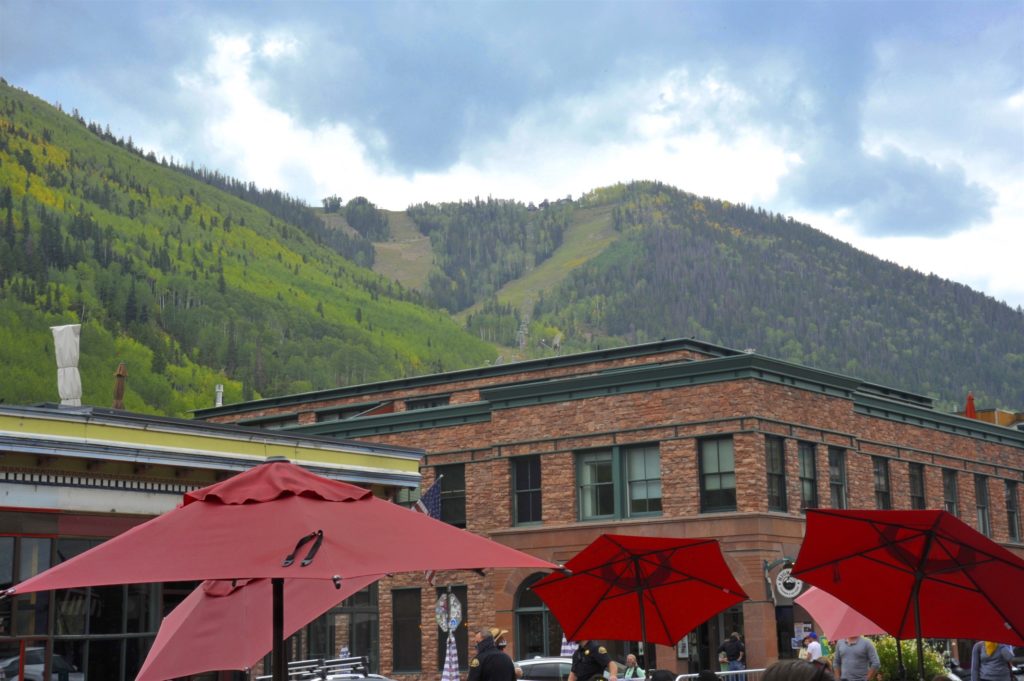
Days Four & Five
Our unscheduled visit to Pagosa Springs is a pleasant surprise. The place gets its name from the hot springs that dominate the center of town. As the deepest hot springs in North America (last best measurement 1,002 ft deep) a series of hotels and spas from modest to high end line downtown and provide for your every whim. On the edge of town lies the club Wyndham resort, a sprawling series of cabins and townhomes adjacent to the 27-hole Pagosa Springs Golf Club. It’s peaceful. The skies are blue and even though it gets to 80, there’s that wonderful fall snap in the air. Janice and I enjoy a couple of days here and an entertaining round of golf.
Day Six
The road from Pagosa to Taos is a combination of US 84 and US 64. Outside Pagosa to the New Mex border are verdant, wide grazing valleys interrupted by rolling pine-capped foothills. Closer to the border we begin to see small groves of aspens.
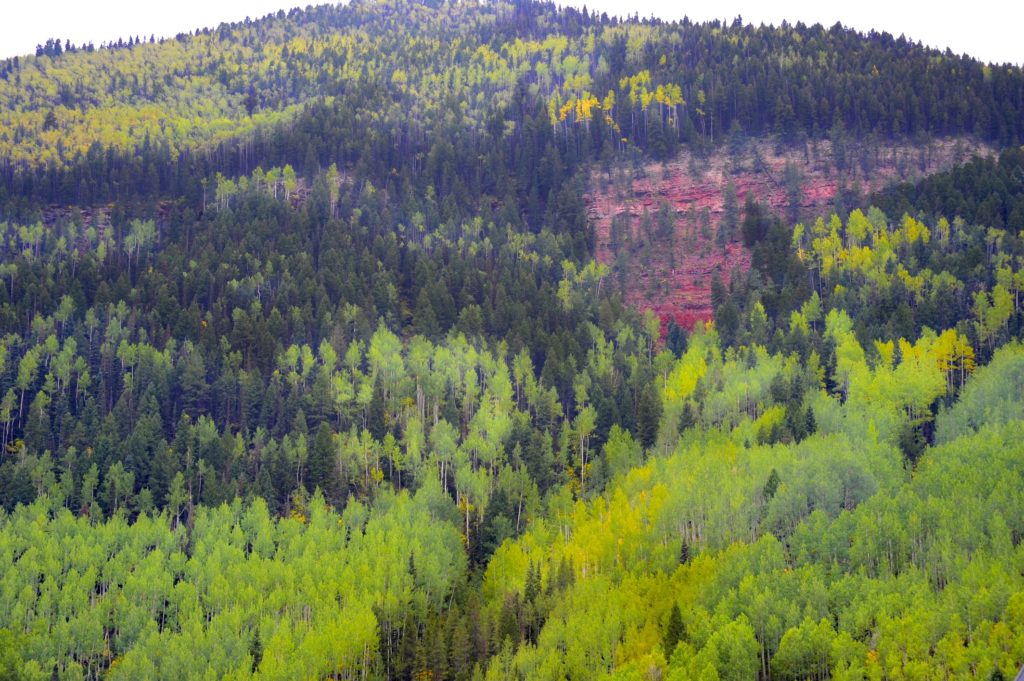
Upon crossing the Colorado/New Mexico border it becomes immediately evident secondary highways are secondary thoughts to the New Mex government. Those nice, well-maintained CO highways turn patchy, bumpy, and rough as soon as the ‘Welcome to New Mexico’ billboard crosses our path. A few miles in US 84 takes a decidedly uphill track, climbing gracefully if inexorably ever higher. Aspens become more numerous and the preference towards cheap road maintenance also becomes clear – oil over gravel, a method once fairly popular in the West of the ‘40s and ‘50s but rare today. I always wince when I see this stuff because I know, depending upon its age, it will be slinging both gravel and oil into my nice, white pearlescent paint and undercarriage. If there’s traffic it’s wise to back off because the stuff starts flying everywhere.
We’re lucky in two ways today – in the 140 miles from Pagosa to Taos we probably cross paths with no more than twenty cars (mostly trucks actually), and the fresh oil on gravel has nearly been completely bedded in. So, even though it goes on for about 40 miles I’m not stirring it up and no one’s around me to do the same. I can only think of the cost factor as a reason for doing this kind of resurfacing, unless some engineer has figured out it adds traction to an icy winter road. Either way, I hate the stuff.
But enough about the road; the scenery is spectacular. There is almost nothing civilized out here. No cell service, no gas stations, no inkling of a town or anything other than large, multi-generational ranches that hint at a possible cluster of people. The mountains and pastures finally give way to a wide-open, high desert. Closer to Taos we see a dirt road branching off our lifeline. Its sign directs the adventurous to three settlements along its dusty invitation to whatever or whoever might be out there. We decline the temptation.
Just north of Taos on US 64 we can see the Navajo’s imaginative underground homes. Truly they appear to be only half built up dirt hills with fancy, whimsy-filled facades and entries making up the more conventional half – very, very different but really fun. Due to COVID we couldn’t drive through the settlement because the Indians have closed their reservations to outsiders.
In Taos we find US 64 is the busy, two lane main drag through town. It’s equally poorly maintained. Parking lots and driveways are full of crater-like potholes and poor transitions to the main road; it’s pretty much a 4-wheelin’ town. Sidewalks, and urban planning in general, appear to be an afterthought; they can be little more than a foot wide. They nearly all suffer significant damage from uneven, uplifted sections and winter sand and salt to combat the snow; there’s plenty of deferred maintenance the residents don’t seem to mind. The buildings are predominantly adobe style and in good condition. One immediately notices a preference for sky blue trim on doors and windows. It harkens from an ages-old Navajo belief the color wards off evil spirits.
Days Seven & Eight
Taos Ski Valley is only 15 miles up SR 150 and the climb from the nearly 7,000 foot town to the 9,300 foot base is dramatic. Aspens and pines quickly begin to dominate. The village at the base of the slopes is well developed and construction continues as seems to be de rigueur for most ski destinations these days.
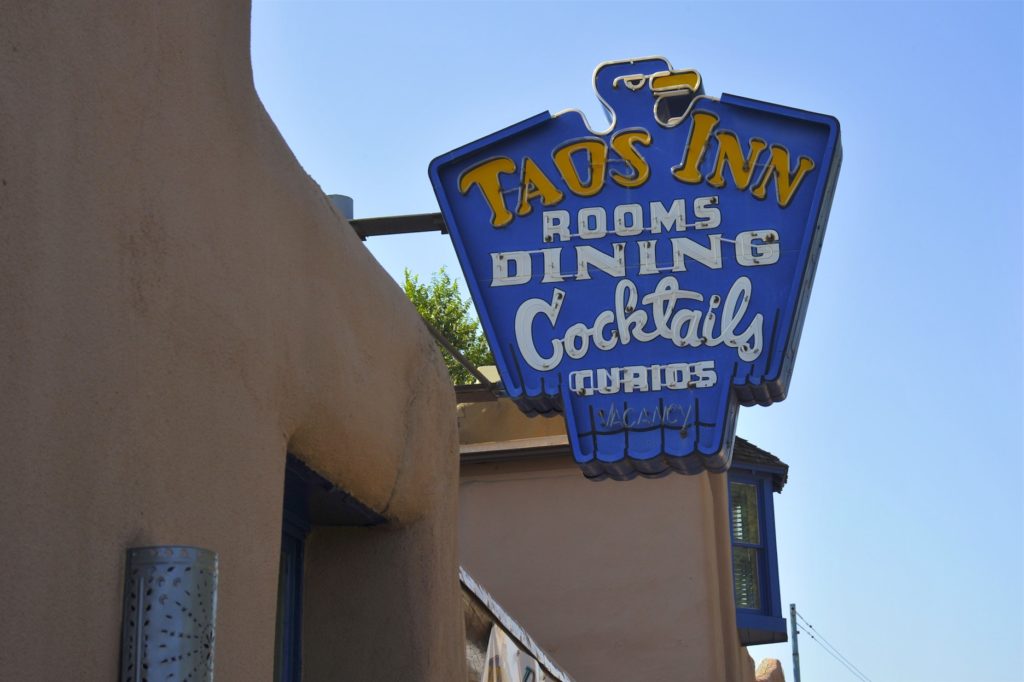
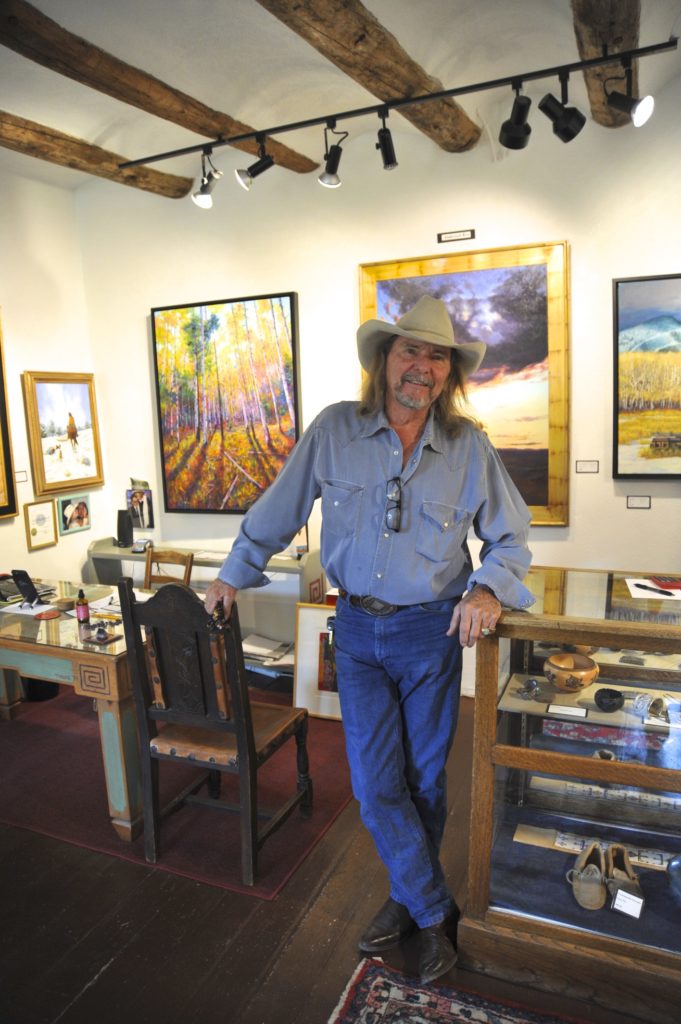
We find early fall here a milder but still dusty version of the long, hot summer. Not my cup of tea, but then that’s probably why I don’t live here. It’s obvious I don’t share much in common with the New Mexico rural lifestyle.
Upon closer inspection though, downtown Taos measures up. Kit Carson is a famous historical resident and his Adobe home and outbuildings are impressively preserved by a non-profit. I have forgotten what an important and heroic figure Carson was.
A short walk from Kit’s Museum we find Tree Menane’s Heritage Gallery in a small courtyard. We find ourselves thoroughly enjoying his enthusiasm and his interesting history as both a Nashville songwriter and now gallery owner.
At Tree’s recommendation we spend the evening at Stella’s, a marvelous New Mex dinner take on old Italy. I have a wonderful spicy chicken fettuccini with a modest but wonderful Barbera – exactly as it would be in Old Italy. Our server is the better half of this husband and wife-owned restaurant and just as in the old country, of the six desserts on the menu momma says only the choc cake, key lime pie and carrot cake are what she made today.
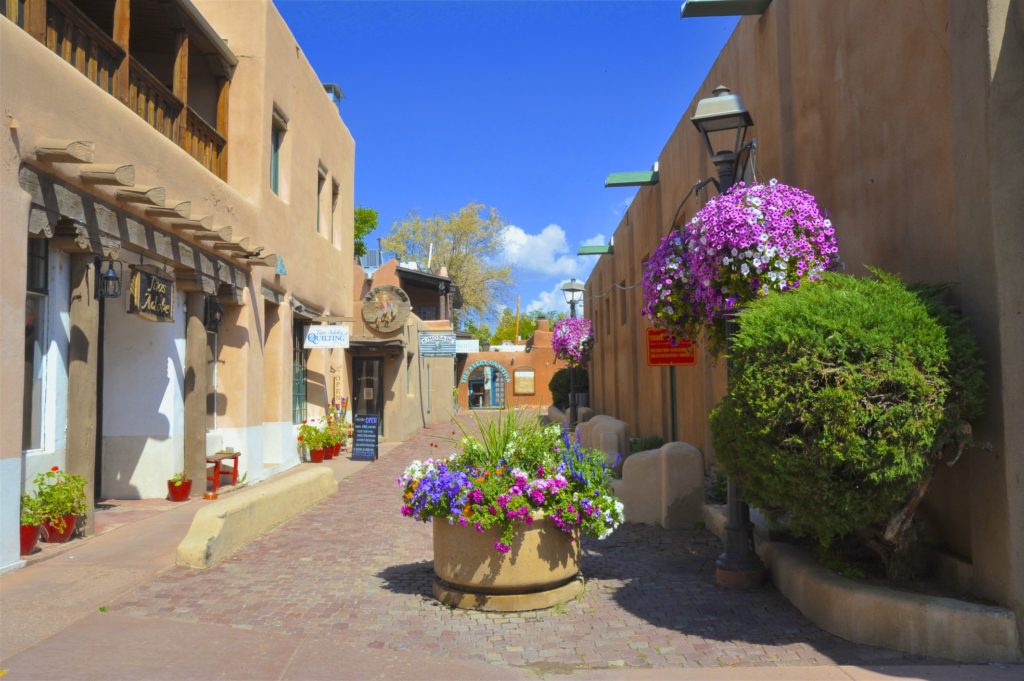
We like the Barbera so much we ask for a bottle. Marco, the owner comes by and as he’s opening our bottle, laments that even though it is his family’s wine he can’t get it anymore because of the crooked customs officials. He concurs it’s a traditional Italian wine and calls it his ‘all day wine’ as it’s one that can be drunk all day in the proper Italian tradition without getting tipsy. I smile inside thinking of the same ‘all day’ reference my former business partner Brad attaches to Coors beer. Mostly I harken back to our days in central Italy and find myself agreeing that is exactly what Italy is all about – wonderful.
Days Nine & Ten
The drive to Santa Fe on NM 68 reveals nothing new for our scenic senses. It has its own beauty but it’s a scruffy one to be sure. As seems indigenous to the Southwest, there’s a dry dustiness that pervades everything. I sneeze regularly, thinking it must be a combination of dust and native plant pollen that’s getting to me.
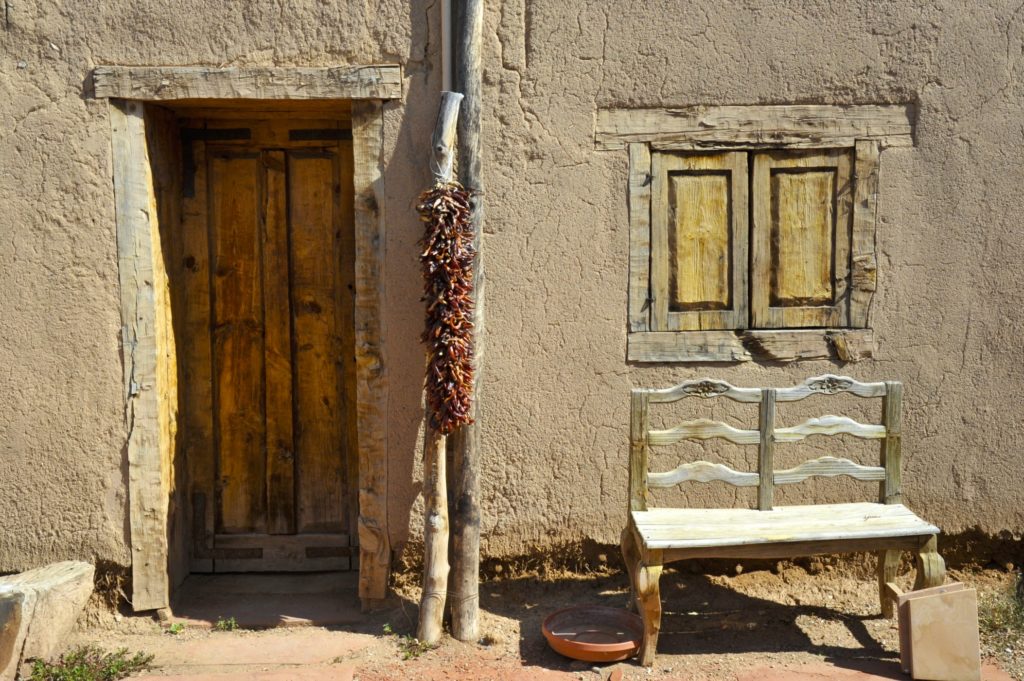
We find Santa Fe a dressier, larger version of Taos. Interestingly, our timeshare accommodations are more modest here than the borderline extravagant two-bedroom we had in Taos; I would have expected the opposite. We spend a day hiking about town and renting a couple of E-bikes to tour the city. It has an intimacy that defies its size of 85,000. Even though Santa Fe is well known as an artist center and houses several museums including the Georgia O’Keefe, Taos somehow felt more closely akin to an artist community. At only 6,000 people, I’m sure size has something to do with that.
For dinner, we walk to Shed’s restaurant and find it a Mexican taste sensation. The queso and guacamole are to die for. The Pollo Adobe and the fish tacos are wonderful, balanced and spicy. Yum! A full page of margarita varieties and a blackberry sorbet blended with brandy, lime and mint top off our fantastic dinner.
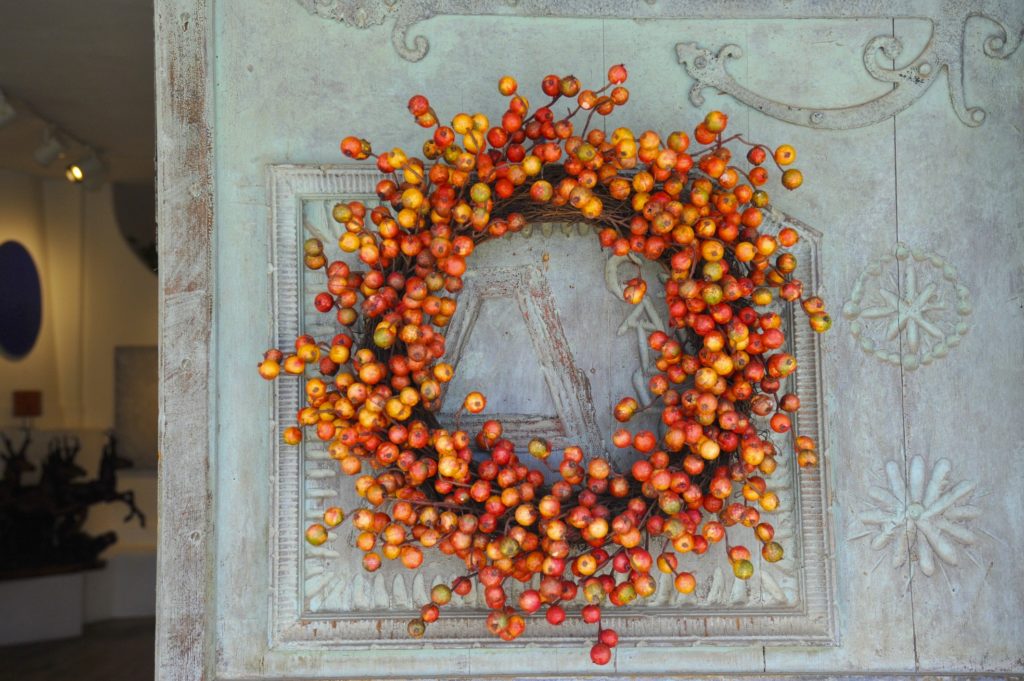
Day Eleven
From Santa Fe we head west on I-25, one of the few really decent pieces of road we have encountered in New Mexico. We hook onto I-40 at Albuquerque and continue west through Gallup on the western edge of New Mex. From there we branch off onto AZ 264 into Arizona and through the reservations of the Navajo, Zuni and Hopi Nations. It’s desolate out here. I measure the level of isolation these days by cell phone service and utility poles – there’s none of either in sight, nor the promise of any for the next 100 miles. That’s remoteness at its highest, and highlights both the self-reliance and resourcefulness of the few people who live out here, and my gratitude for the reliability of my faithful Aston Martin.
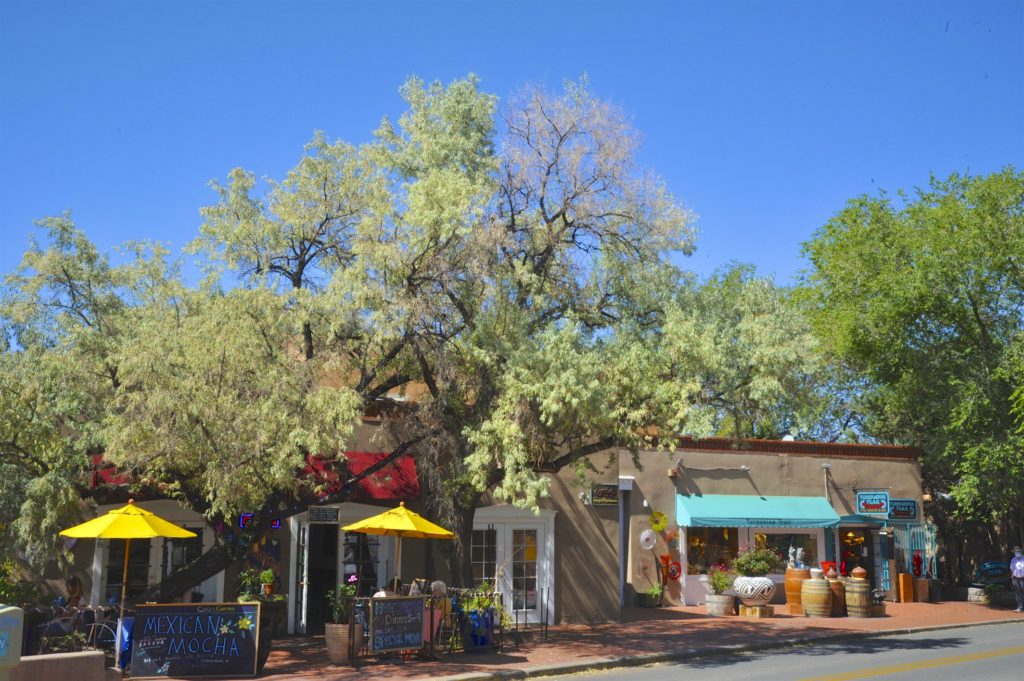
We head for the lonely hub of Tuba City, not much more than the junction of state roads 264 and 160. It straddles the Hopi Reservation and in our brief stop there for gas, it appears dominated by the Hopi who live nearby. It’s a different world than I am used to and not one I’m sure I envy, even for it’s simplicity and straightforward style of life. It can’t be easy out here and I wonder what they all do to support themselves.
The Navajo and Hopi are actually quite entrepreneurial. There are plenty of signs – The Navajo Nation Oil & Gas Co.; NAPCO gas stations, which I’m guessing is the Navajo Petroleum Company; Hopi coal leases; farming and leased farming land; radio stations, construction and transportation; and of course, casinos. Still, they are challenged by changing environmental regulations and energy markets, and high unemployment.
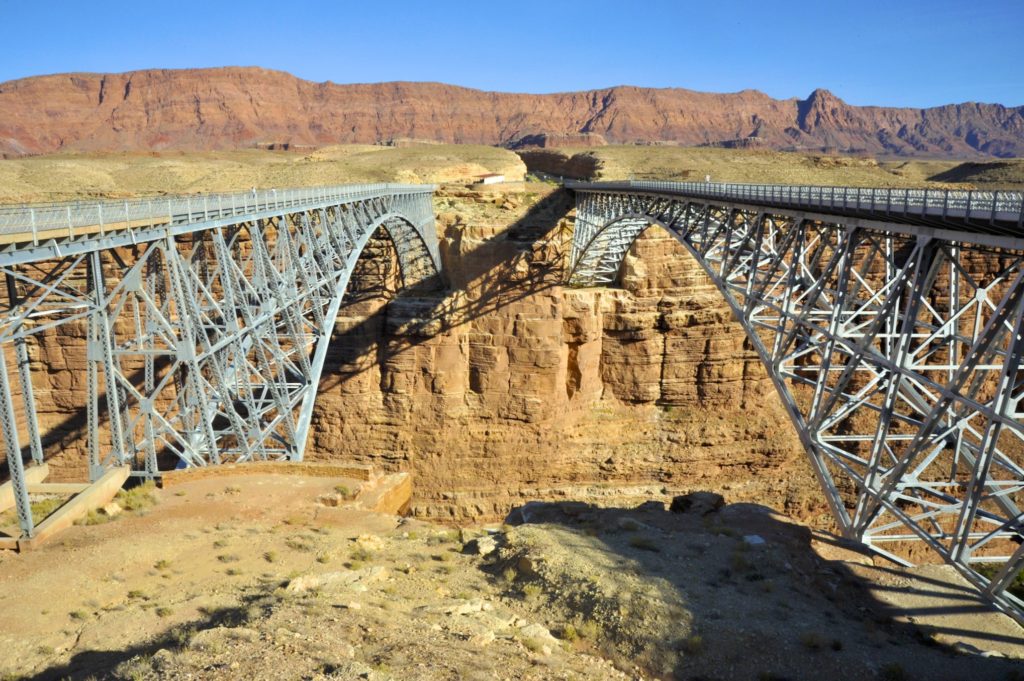
From Tuba City, it’s SR 160 to US 89 North, branching off to the spectacular Marble Canyon and the twin Navajo Bridges crossing the Colorado River. About fifteen miles north as the crow flies is Glen Canyon Dam and Lake Powell, but our schedule doesn’t permit a visit on this trip. US 89 tempts us with signs to the Grand Canyon’s North Rim, but it’s an 85 mile round trip detour we don’t have time for. Those nagging jobs are calling us home and 13 days is all we have this time around.
Visiting New Mexico for the first time and crossing the desolate parts of Arizona and Utah highlights for me the different natures of these states. I find myself thinking about how interesting it is that as Americans we share so many common traits and ideas, yet every state still has unique viewpoints and outlooks, and how those views manifest themselves in the physical attributes of each place.
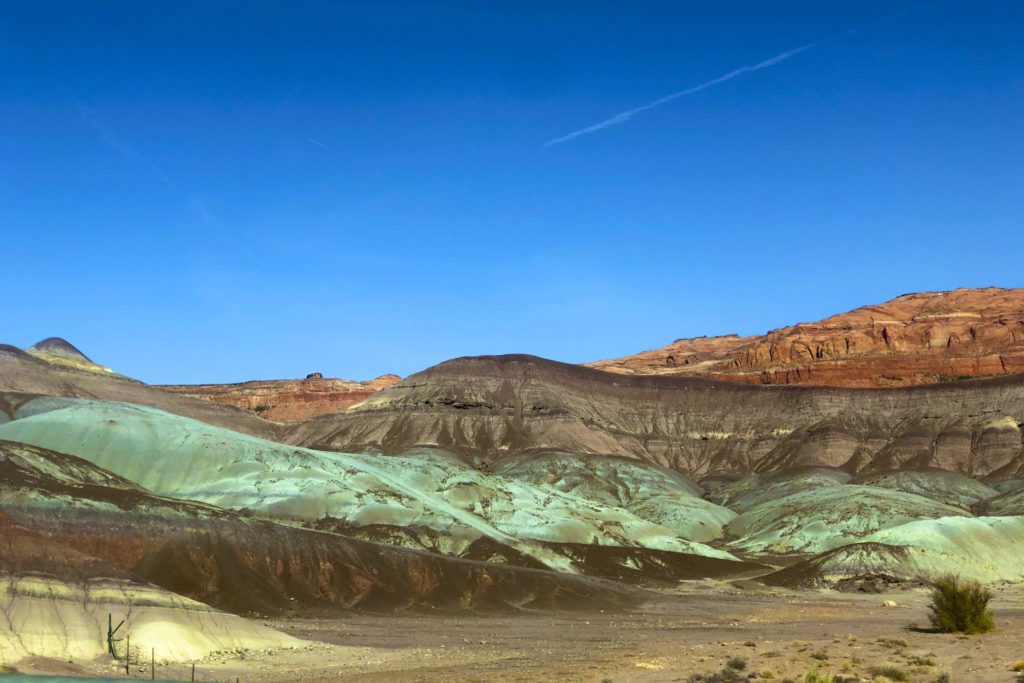
New Mexico has the scruffy feel I mentioned. The people there value nature and seem focused on the nature of things. They don’t spend much time worrying about urban planning or the condition of roads and such; that seems relatively unimportant. Can I get from point A to point B? Yes? Then everything is fine. I only need access; I don’t need to get there in style. I have to admit, the resulting condition of their public access and apparent lack of urban planning bothers me. I’m a car enthusiast and therefore, a road enthusiast. I want to drive on well-designed roads in good condition, the gooder the better. So, poor or marginal roads bother me. It presents a lack of care.
By contrast, Arizona pays much more attention to the condition of their roads and accessibility in general. Still, we’re out in the boonies, and there’s not much to be done to or with what’s out here. Places like Flagstaff tend to highlight the change in approach, and probably the tax base, but they definitely consider a more organized and higher level of functional living conveniences to be important.
Utah has always struck me as a people who place a high degree of importance on tidiness, organization and efficiency. They are rational thinkers – conservative, physically active, thoughtful but purposeful. They have the lowest taxes and are considered the best managed of the fifty states. They prove you can be civic-minded and forward thinking without being liberal, progressive or whatever else people want to call themselves these days. Best of all, they make no apologies for who they are.
Day Twelve
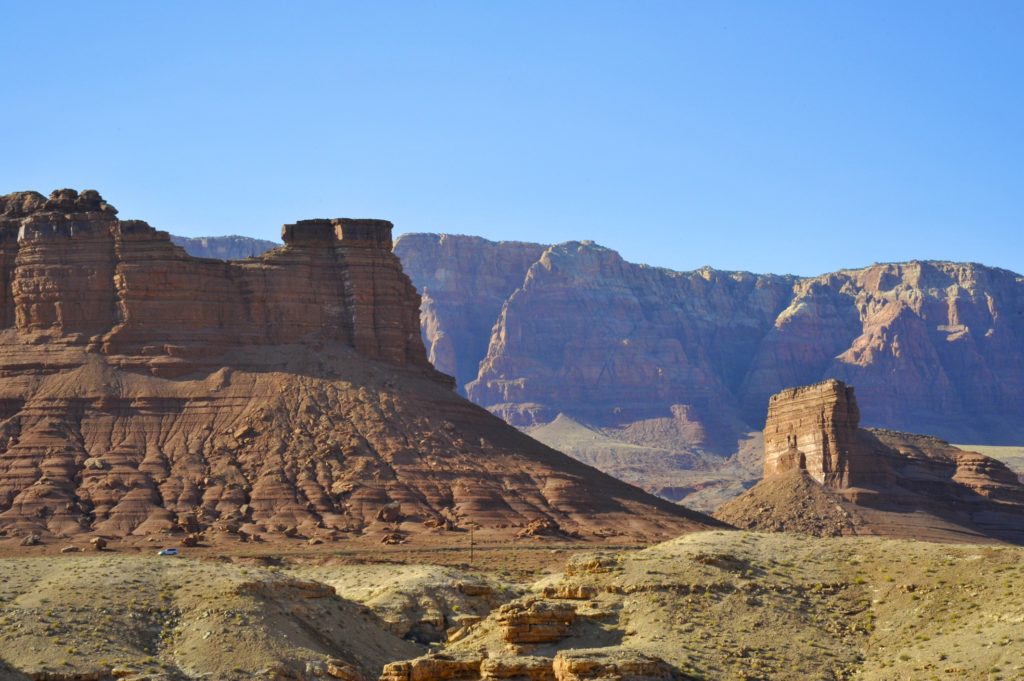
The drive home out of St. George directs us back towards Boise. Fortunately, it’s all secondary roads beginning with SR 18, then on to SR 56 before hitting US 93. It’s a more interesting landscape of farming, grazing, and mountains across wide valleys. But that doesn’t last, as it once more becomes high desert going back and forth from arid to semi-arid, temperate to continental. One thing stubbornly clings on no matter where we are – sagebrush. On SR 56 it’s more of the same.
Crossing into Nevada trees become more numerous with rock and hill formations to attract your interest. But that doesn’t last long either; there are more long, straight roads ahead. So long and straight I can’t help but be impressed with their length. We crest one hill after another only to see another ten-mile line of sun-bleached asphalt etched in the dirt and sagebrush. There’s nothing to write home about until we hit Jackpot, perched at the Idaho border. The casinos here are you’re last chance at Nevada games of chance and the town apparently exists to show and tell you just that.
After that, it’s pretty much a straight-line dash to Twin Falls and a rendezvous with I-84 into Boise for the night.
Day Thirteen
From Boise, we sprint across northeast Oregon, again with not much to pique our interest. What is there, like the legendary Pendleton Woolen Mills in Pendleton, we have been to and done. So, it’s on across the mighty Columbia at I-82, then a diversion along the Washington side of the river on WA 14 to WA 221. Then it’s a solid straight line through the well-known viticultural area of Horse Heaven Hills. Remote, beautiful rolling hills interspersed with wheat, fruit trees and vineyards. Then it’s into the wine town of Prosser and a dash up WA 22 to Mabton, Toppenish, Wapato and Parker along the Yakima River. This is a farmland road and we drive right through harvest time in this fertile valley. Tractors and their dirt clods litter the road, whose shoulder is only a narrow, dark, fertile transition of dirt to the fields and their rows of alfalfa, asparagus, onions, snap beans, and tomatoes. Vineyards and hops are plentiful. This valley is the nation’s leading producer of hops and the wines from the surrounding hills are world-renowned. If you’re wine tasting in the Pacific Northwest, greater Yakima is one of the must-stops.
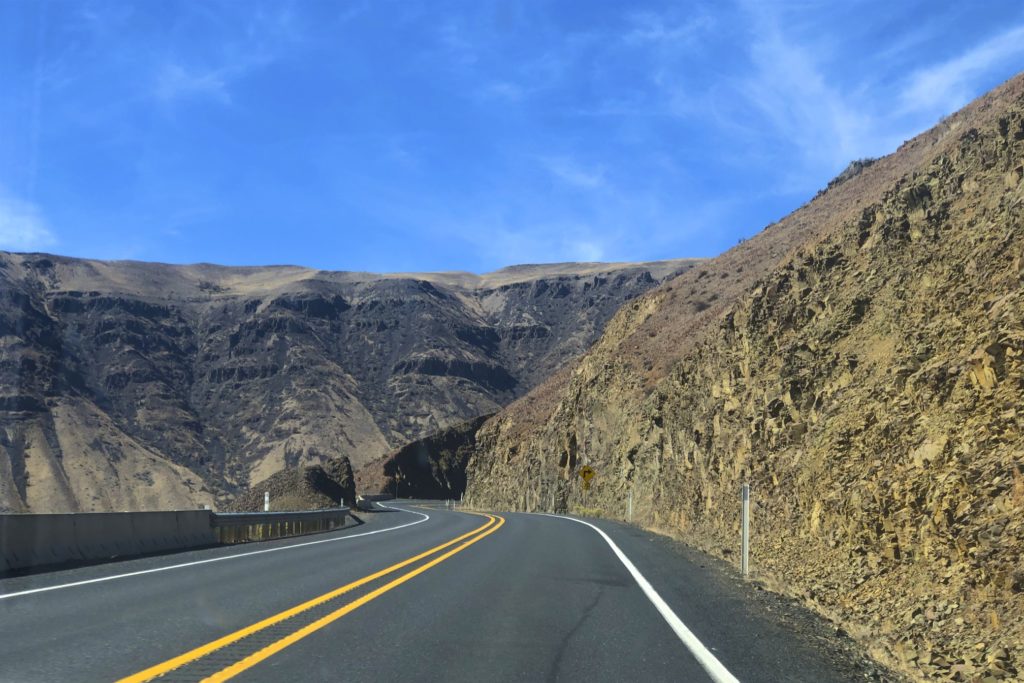
We momentarily give in to the Interstate before diving off again at WA 823 to take a wonderful winding, lightly traveled, 28-mile drive through the Yakima Canyon on WA 821. The harsh, grey rock walls of the canyon give way to a meandering river and a lush green valley floor. Campgrounds, fly fishing, river floating, and hunting dominate this little isolated oasis that is literally only minutes from the town of Yakima. And it’s great fun to drive! The smooth pavement, etched from the eastern canyon walls, alternately sweeps and hairpins while moving up and down along the rock to provide wonderful views of the river before finally descending to the valley floor at the northern end. From there we join up with I-90 and begin the final 120-mile run home. Not, however, until we stop at Twin Pines Drive-In outside Cle Elum. If you like an old-fashioned burger with a thick boysenberry shake from a small town joint, this is for you. We stop counting calories, do the dirty deed, and head for home satisfied with both our lunch and our 3,500-mile journey.

